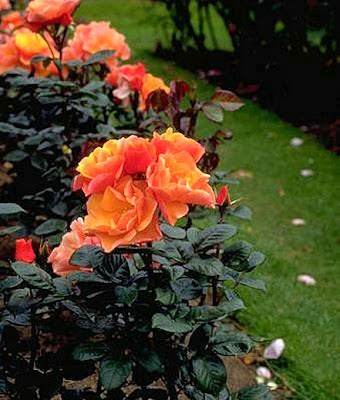Some nurseries and mail-order companies supply bare-root plants - grown in the soil and then dug up to sell. Bare-root plants, mostly fruit trees or roses, are sold only when dormant in winter, which is also when they should be planted.
Avoid the temptation to buy all your plants in flower at the one time, or your garden will be a one-season wonder. Instead, shop several times during the year so that you can see a wide range of different plants at their best. Staggering your purchases will also make for a more varied selection of plants.
What to Look For
Buy a tree or shrub only if it looks healthy; the leaves should be in good condition, and the overall shape compact and bushy. It should have plenty of good, strong, evenly spaced branches, especially towards the base. Ideally, there should be no weeds growing in the pot, but the odd one or two is an indication that the plant is fairly established. The plant should be clearly labeled and the potting mix moist.
A plant that has pale, yellowing leaves is possibly pot-bound, and the potting mix lacking in fertilizer. Knock it out of the pot to see if the roots are a tangled mass or if they are growing thickly through the drainage holes; in either case, do not buy it. However, the roots need to be established and should fill the pot. Avoid dry or wilted plants, those with signs of pests or diseases, or those that are lopsided or have only a few shoots, because they will need remedial pruning to put right.
 Grow Japanese maples, such as this purple-leaved variety, in a raised bed or container if your soil is alkaline.
Grow Japanese maples, such as this purple-leaved variety, in a raised bed or container if your soil is alkaline.Plant Size
The largest plants are not always the best ones to choose. Often the taller ones will have started to lose leaves lower down, so pick one that has a bushy, symmetrical shape and strong growth with foliage down to the base.
The size of the plant will also affect the time that it takes to establish. A larger plant will take longer for its roots to establish in the surrounding soil than a smaller specimen, which will catch up with the larger one in a couple of seasons. However, some slower-growing shrubs, such as magnolia and Acer palmatum var. dissectum, are worth buying as large specimens because otherwise they will take many years to reach the desired size and, in the case of the magnolia, to flower. Larger specimens are also ideal for an instant effect.































